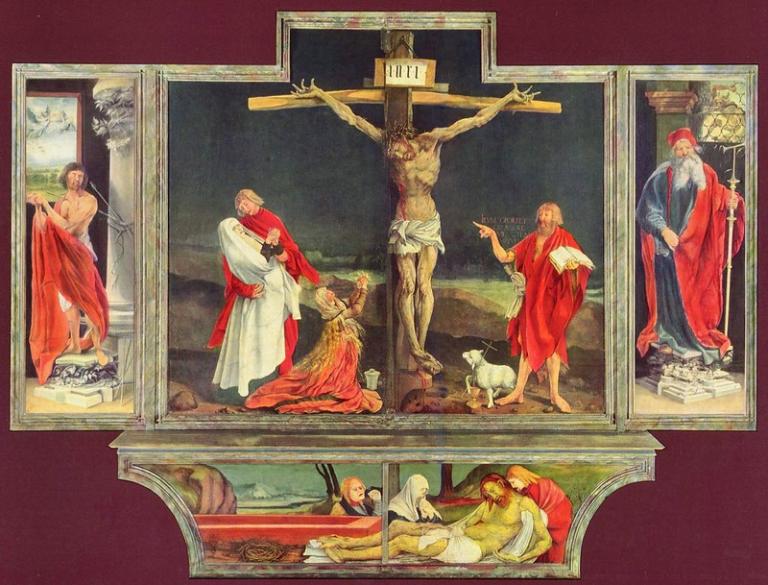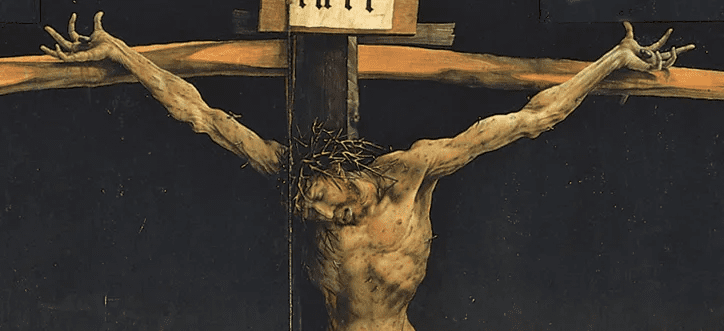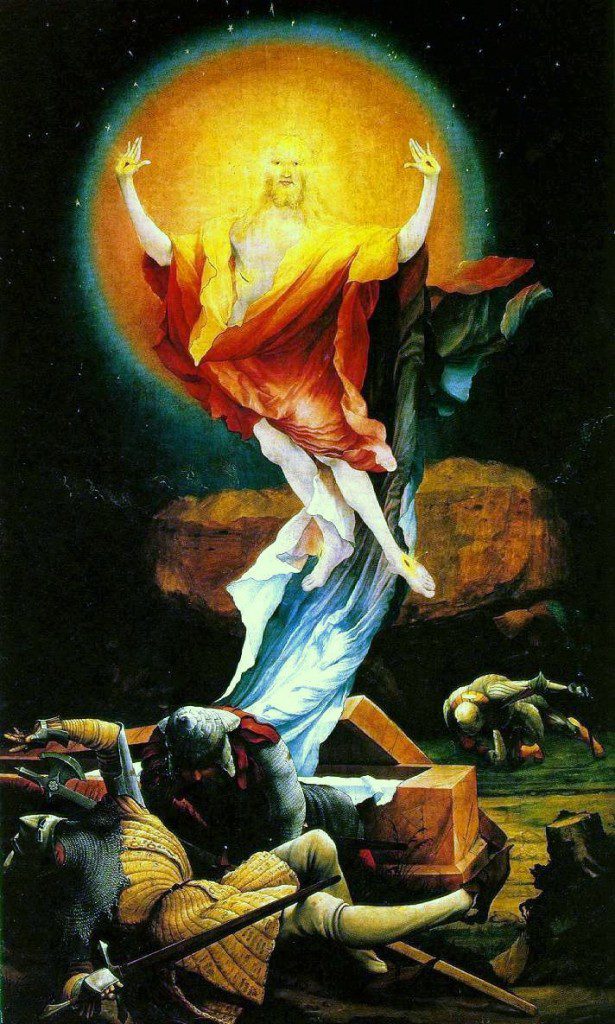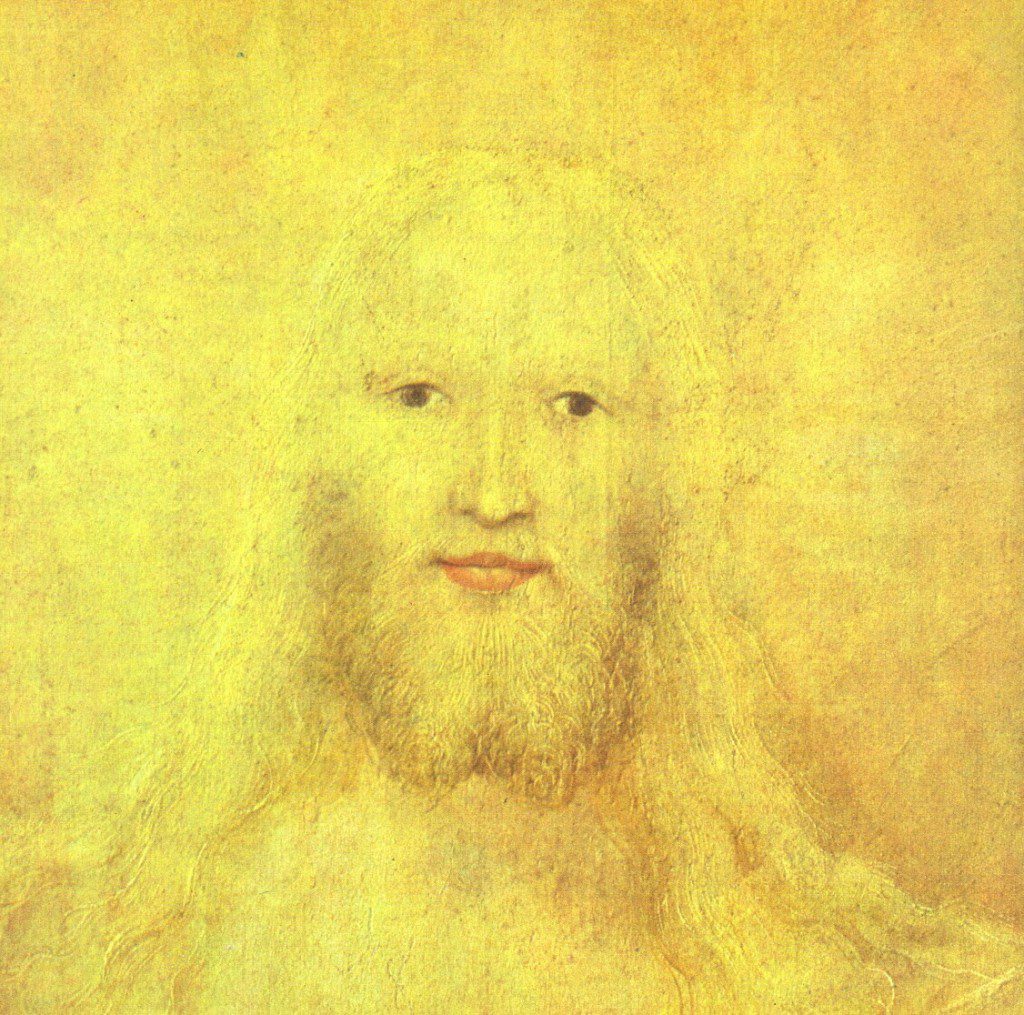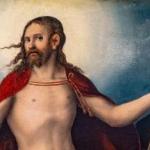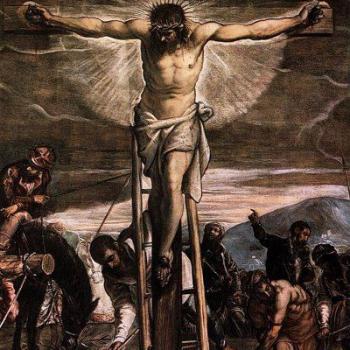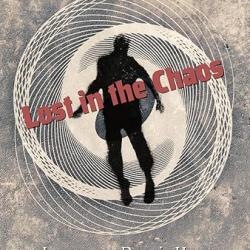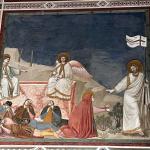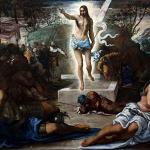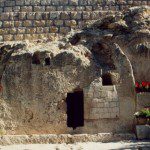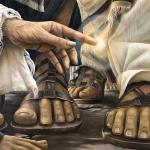I have blogged before about the Isenheim Altarpiece by Matthias Grünewald (c. 1470-1528), with its wrenching depiction of Christ’s crucifixion. Located in what is now northeastern France near the border with Germany, the altarpiece was painted for the chapel of a hospital devoted to caring for victims of skin disease.
Judith H. Dobrzynski, art critic for the Wall Street Journal, has written a fascinating article for that publication entitled Isenheim Altarpiece: Grünewald’s Towering Biblical Tableaux. The work, which has recently been restored, consists of several panels that unfold, depicting other scenes from the Bible and the lives of saints. In her discussion of the artistic merits of the work–Grünewald’s use of color and lines of composition–she concludes that the Isenheim Altarpiece is “among the most affecting artworks ever created.”
This inspired me to write about it again, reprising some of what I wrote in 2017 and working in some of Dobrzynski’s comments and more details from the paintings. Grünewald’s depiction of Christ crucified as deader than dead, followed by his depiction of the same Christ at His resurrection in His glory is a fitting meditation as we move from Good Friday to Easter.
Here goes. . .
On Good Friday of 2017,I posted a picture of Christ on the Cross from the altarpiece in the chapel of St. Anthony’s hospital in Isenheim, Germany. The painting, by Matthias Grünewald is grisly and heart-rending, depicting the suffering and deadness of the crucified Jesus.
“It’s a gruesome scene,” observes Dobrzynski, “with Christ’s lacerated body in a tattered loincloth, visibly wracked by pain and discolored by death, his claw-like fingers and curled toes stiffened by rigor mortis.”
In addition to His own wounds, Jesus’ body is covered with sores, like the patients dying of plague or St. Anthony’s fire who prayed in that chapel. This was to illustrate this Bible verse, the Septuagint rendition of Isaiah 53: 4, after a description of Jesus’ healings: “This was to fulfill what was spoken by the prophet Isaiah: ‘He took our illnesses and bore our diseases'” (Matthew 8:17). (Does this mean that when Jesus healed people, He took their diseases into Himself, as He would with their sins?)
The Crucifixion is painted on the outside of the altarpiece, but then, if you open up it up, you see this:
The same Christ who was so dead in the one painting is now triumphantly alive. His wounds from the Cross are still visible. But the sores are gone. Just as the sores of the dying patients will be gone. Just as their sins will be gone–when they too rise again.
Says Dobrzynski,
Grünewald has painted what cannot be seen by man, Jesus as the divine. Ingeniously, the scene flashes back to the Transfiguration, where a radiant Jesus appeared to three apostles, and forward to his Ascension. Grünewald conveys the Resurrection’s turbulence, however, with his depiction of the fearful soldiers, tumbling away from the grave they were sent to guard.
Christ’s face is depicted as a source of light. This depicts what was said in John’s Gospel: “In him was life, and the life was the light of men. The light shines in the darkness, and the darkness has not overcome it” (John 1:4-5). And, indeed, the light of Christ shines in every darkness.
The Wikipedia entry for Matthias Grünewald, who lived from 1470 to 1528, says that one of the few contemporary references to him is by Phillipp Melanchthon and that “he had some Lutheran pamphlets and papers at his death.” So he might well be counted as a Lutheran artist. He certainly understood the Theology of the Cross.
A detail from the painting:
Painting by Grunewald, retable d’Isenheim (http://www.eldritchpress.org/jkh/gr7.html) [Public domain], via Wikimedia Commons
Initial illustration: Isenheim Altarpiece, photo by CEA via Flickr, Creative Commons 2.0


